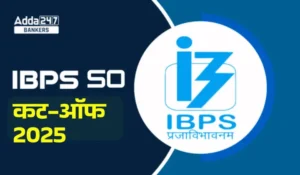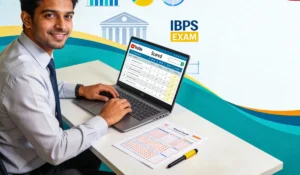Directions
(1-10): Read the following passage
carefully and answer the questions given below it. Certain words are given in bold
to help you locate them while answering some of the questions.
is a sense of gloom pervading India’s $150-billion information technology (IT)
industry, which earned India $88 billion in foreign exchange in 2015-16 through
the exports of software and IT-enabled services (ITeS). According to data from
the Reserve Bank of India (RBI), the rate of growth of the combined exports of
software and ITeS fell from 20.8 per cent in 2012-13 to 14.9 per cent in
2014-15 and to a low of 7.3 per cent in 2015-16. Global circumstances combined
with the specific nature of India’s IT prowess
seem to be responsible for this fall. India’s IT industry recorded remarkable
growth over a long period because it exploited an outsourcing opportunity by
perfecting a global delivery model for software and ITeS based on cheap skilled
labour. That opportunity was offered by the cost-cutting imperatives facing the corporate sector in the United States and
elsewhere.
a result, IT industry revenues grew in double digits, with export earnings
accounting for a large share of those revenues. Employment grew rapidly, albeit
from a low base and at a lower pace than revenues. And a service industry to
support the IT sector’s growth grew around the principal centres of its
activity, suggesting that despite the absence of physical production the sector
had backward linkages through which it delivered some economy-wide benefits.
This combination of the characteristics of India’s IT success not only gave the
industry a position of privilege in the economy but made it the symbol of
India’s ostensible
post-globalisation success.
there were a number of features of that model that made it vulnerable to
changes in circumstances. To start with, it had a high degree of dependence on
exports for growth, with the U.S. accounting for a very large share of those
exports, followed by the European Union (E.U.) at a distant second. At the turn
of the century, the U.S. market accounted for close to two-thirds of India’s IT
exports and the E.U. for about a quarter, and even in 2015-16, the U.S. was
first with 62 per cent and Europe second with 24 per cent. Little had changed
for the industry.
software services (or code writing and customisation of different levels of
sophistication) and ITeS, rather than IT products, accounted for an
overwhelming share of revenues. To garner
those revenues, a workforce with essential IT skills and familiarity with
English, communication infrastructure, and the requisite organisation were the
necessary ingredients. But sustaining those revenues required constant
attention to cost competitiveness, which encouraged automation of the routine
activities that constitute an important part of the industry’s operations.
this output composition required combining offshore delivery with local
services provision to understand client requirements and customize services and even run operations. So, on-site work
remained an important component of the industry’s activity. In 2002-03, 48 per
cent of India’s exports of IT services was through the medium of a commercial
presence on foreign soil and another 13.5 per cent through the presence of
natural persons. By 2015-16 those figures had come down to 18.9 per cent and
16.1 per cent respectively. But the local presence, which ensured provision of
35 per cent of the value services that had risen in value from Rs.31,100 crore
to Rs.5,76,310 crore between 2002-03 and 2015-16, was undoubtedly large and
crucial to the industry’s performance.
a few firms (such as Tata Consultancy Services (TCS), Infosys and Wipro)
account for a very large share of the industry’s revenues, drawing attention to
their operations and brand as happened in the U.S. recently.
Why according to the passage India’s IT industry is facing a sense of
despondency?
(I)Because
of unavailability of cheap skilled labour force in the country.
(II)There
is an abrupt decline in the rate of growth of the combined exports of software
and ITeS.
(III)Because
of over-exploitation of outsourcing opportunities.
(I) is correct
(b)Only
(II) is correct
(c)Both
(I) and (III) are correct
(d)Both
(II) and (III) are correct
(e)All
are correct
Q2.
How the outsourcing opportunity helped India’s IT industry in achieving
exceptional growth?
(I)It
bettered India’s global delivery model for software and ITeS based on cheap
skilled labour.
(II)There
was a significant growth in generation of revenues of IT industry.
(III)
It helped in rapid growth of employment.
(I) is correct
(b)Only
(III) is correct
(c)Both
(I) and (II) are correct
(d)Both
(II) and (III) are correct
(e)All
are correct
Q3.
What does the author mean by the sentence, “Little had changed for the industry” as used in the passage?
(a)Despite
the subsequent growth in other sectors, Indian IT industry failed to add value
to the economy.
(b)IT
Industry still had a high degree of dependence on exports for growth.
(c)
Software services and ITeS were responsible for overwhelming share of revenues,
rather than IT products.
(d)Both
(b) and (c)
(e)All
of the above
Q4.
Which of the following statements is/are true in context of the passage?
(I) In 2002-03, 18.9 per cent of India’s exports
of IT services was through the medium of a commercial presence on foreign soil
and another 16.1 per cent through the presence of natural persons.
(II)
India’s IT success not only gave the industry a position of privilege in the
economy but made it the symbol of India’s ostensible post-globalisation
success.
(III)
A workforce with essential IT skills and familiarity with English,
communication infrastructure, and the requisite organisation were the necessary
ingredients for drawing attention of the outsourcing opportunity.
(I) is true
(b)Only
(II) is true
(c)Both
(I) and (II) are true
(d)Both
(II) and (III) are true
(e)All
are true
Q5.
Why according to the passage the growth rate of combined exports of software
and ITeS slumped to a new low?
(a)
Global circumstances combined with the specific nature of India’s IT prowess
seem to be responsible for this fall.
(b)
India’s over dependence on the exports of software and ITeS for growth.
(c)
Due to absence of physical production.
(d)
Lack of workforce with essential IT skills and familiarity with English, and
communication infrastructure.
(e)
All of the above.
Directions
(6-8): Choose the
word/group of words which is most similar
in meaning to the word/group of words printed in bold as used in passage.
Prowess
(a)Dexterity
(b)Method
(c)Composure
(d)Liberty
(e)Serenity
Q7.
Garner
(a)Pick
up
(b)Setup
(c)Preserve
(d)Buy
up
(e)Amass
Q8.
Imperative
(a)Subtle
(b)Piercing
(c)Vital
(d)Supple
(e)Mercurial
Directions (9-10): Choose the word/group of words which is most opposite in meaning to the word/group
of words printed in bold as used in passage.
Ostensible
(a)Avowed
(b)Genuine
(c)Alleged
(d)Illusory
(e)Feigned
Q10.
Customize
(a)Sustenance
(b)Broaden
(c)Maintenance
(d)Reshape
(e)Comply
Directions (11-15): Rearrange the following sentences (A),
(B), (C), (D), (E), (F) in the proper sequence to form a meaningful paragraph;
then answer the questions given below them.
(A) In many
ways, it was.
(B) This could have made defending the region difficult for us.
(C) Loss of these heights would have given the enemy, power to dominate the
axis leading to Ladakh, as also the complete area.
(D) Pakistan was certain that India would approach the world community but not
launch an attack.
(E) The main contention by many strategists has been that by reclaiming the
heights that was occupied by Pakistan, can we call it a victory?
(F) It was also their belief that even if India attacked, it would not succeed.
Q11. Which of
the following should be the first
sentence after rearrangement?
(a) B
(b) F
(c) A
(d) E
(e) C
Q12. Which of
the following should be the third
sentence after rearrangement?
(a) A
(b) D
(c) B
(d) E
(e) C
the following should be the fifth sentence
after rearrangement?
(a) B
(b) F
(c) A
(d) D
(e) E
Q14. Which of
the following should be the sixth (last) sentence after rearrangement?
(a) F
(b) E
(c) A
(d) B
(e) C
Q15. Which of
the following should be the second
sentence after rearrangement?
(a) C
(b) A
(c) B
(d) F
(e) E
SOLUTIONS:
S1.
Ans. (b)
Sol.
Refer the first paragraph, “According to data from the Reserve Bank of India
(RBI), the rate of growth of the combined exports of software and ITeS fell
from 20.8 per cent in 2012-13 to 14.9 per cent in 2014-15 and to a low of 7.3
per cent in 2015-16.” Hence only statement (II) is the correct reason.
S2.
Ans. (e)
Sol.
Refer the last few lines of first paragraph, “India’s IT industry recorded
remarkable growth over a long period because it exploited an outsourcing
opportunity by perfecting a global delivery model for software and ITeS based
on cheap skilled labour.” and the first few lines of second paragraph, “As a
result, IT industry revenues grew in double digits, with export earnings
accounting for a large share of those revenues. Employment grew rapidly, albeit
from a low base and at a lower pace than revenues.” Hence all three statements
are correct in context of the passage.
S3.
Ans. (d)
Sol.
Refer the first few sentences of the third paragraph, “However, there were a
number of features of that model that made it vulnerable to changes in
circumstances. To start with, it had a high degree of dependence on exports for
growth, with the U.S. accounting for a very large share of those exports…” and
the first sentence of the fourth paragraph, “Secondly, software services (or
code writing and customisation of different levels of sophistication) and ITeS,
rather than IT products, accounted for an overwhelming share of revenues.”
Hence both the statements (b) and (c) are correct in context of the passage.
S4.
Ans. (b)
Sol.
Refer the statements, “In 2002-03, 48 per cent of India’s exports of IT
services was through the medium of a commercial presence on foreign soil and
another 13.5 per cent through the presence of natural persons.”, “This
combination of the characteristics of India’s IT success not only gave the
industry a position of privilege in the economy but made it the symbol of
India’s ostensible post-globalisation success.” and “To garner those revenues,
a workforce with essential IT skills and familiarity with English,
communication infrastructure, and the requisite organisation were the necessary
ingredients.” Hence only statement (II) is true in context of the passage.
S5.
Ans. (a)
Sol.
Refer the first paragraph, “According to data from the Reserve Bank of India
(RBI), the rate of growth of the combined exports of software and ITeS fell
from 20.8 per cent in 2012-13 to 14.9 per cent in 2014-15 and to a low of 7.3
per cent in 2015-16. Global circumstances combined with the specific nature of
India’s IT prowess seem to be responsible for this fall.” Hence (a) is the
correct option in context of the passage.
S6.
Ans. (a)
Sol.
Prowess means skill or expertise in
a particular activity or field. Dexterity
means skill in performing tasks, especially with the hands. Hence both are
similar in meanings.
Serenity means the state of being
calm, peaceful, and untroubled.
S7.
Ans. (e)
Sol.
Garner means gather or collect
(something, especially information or approval). Hence “amass” is the word most similar in meaning to it.
S8.
Ans. (c)
Sol.
Imperative means a factor or
influence making something necessary. Hence ‘vital’ is the word most similar in
meaning to it.
Supple means bending and moving
easily and gracefully; flexible.
Mercurial means subject to sudden
or unpredictable changes of mood or mind.
S9.
Ans. (b)
Sol.
Ostensible means stated or appearing
to be true, but not necessarily so. Hence ‘genuine’
is the word most opposite in meaning to it.
Avowed means that has been
asserted, admitted, or stated publicly.
S10.
Ans. (b)
Sol.
Customize means modify (something)
to suit a particular individual or task. Hence ‘broaden’ is the word most opposite in meaning to it.
Sustenance means the maintaining of
someone or something in life or existence.
Sol. The
sequence after rearranging the sentences is EACBDF
S12.
Ans. (e)
Sol.
The sequence after rearranging
the sentences is EACBDF
S13. Ans. (d)
Sol. The
sequence after rearranging the sentences is EACBDF
S14. Ans. (a)
Sol. The
sequence after rearranging the sentences is EACBDF
S15. Ans. (b)
Sol. The
sequence after rearranging the sentences is EACBDF
Download PDF of this English Quiz for IBPS Clerk Prelims 2020
Visit here to discuss all your queries related to Government Exams
Practice with Crash Course and Online Test Series for IBPS Clerk Prelims 2020:
- Bank Maha Pack (1 Year Validity)
-
IBPS Clerk 2020 Online Coaching for Clerk Prelims | Complete Bilingual Batch by Adda247
- Complete IBPS 2020 exams Video Course




 IBPS SO मेन्स कटऑफ 2025 जारी - चेक करें ...
IBPS SO मेन्स कटऑफ 2025 जारी - चेक करें ...
 IBPS SO के इंटरव्यू से पहले बड़ा अपडेट -...
IBPS SO के इंटरव्यू से पहले बड़ा अपडेट -...
 SSC CGL Result 2025 OUT: टियर-1 रिजल्ट ज...
SSC CGL Result 2025 OUT: टियर-1 रिजल्ट ज...








